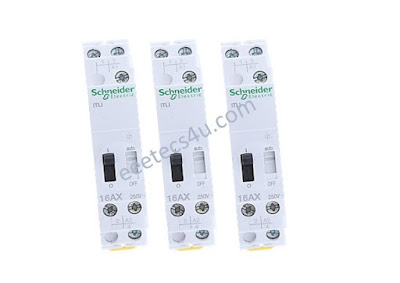Latching Relay Working
A latching relay (Impulse Relay) is an electromechanical switch that can maintain its position after being actuated, without requiring continuous power to hold the contact closed. It has two stable states, one with the contact closed and one with the contact open, and it remains in the last state it was set to until it is reset.
Latching Relay Usage
One common use of latching relays is in circuit protection systems where it is necessary to maintain a certain state of the circuit even if power is lost. For example, a latching relay can be used in a power supply to prevent voltage surges from damaging the connected equipment. The relay can be set to disconnect the circuit when a voltage surge is detected, and it will remain in that state until it is reset manually.
Latching relays are also used in applications where power consumption is a concern. Since they do not require continuous power to maintain their state, they can be more energy-efficient than standard relays. This makes them ideal for use in battery-powered devices where power consumption is a critical factor.
Common application of latching relays
Another common application of latching relays is in remote control systems, where they can be used to control the on/off state of devices such as lights or motors. The latching relay can be actuated remotely by a control signal, and it will maintain its state until it receives a signal to change its state.
A latching relay is a type of relay that can maintain its state after being switched on or off without the need for continuous power. It has two stable states, one which is latched when power is applied and the other which is latched when power is removed. Latching relays are commonly used in applications where power consumption must be minimized or in situations where it is necessary to maintain a particular state even after power is lost.
View specifications and more details of 230 Volt latching relay
Some common uses of latching relays include:
Energy management systems: Latching relays (Impulse relay) can be used in energy management systems to control the switching of lights, fans, and other appliances. This helps to save energy by turning off devices when they are not needed.
Motor control: Latching relays can be used to control the direction of a motor. By using two latching relays, the motor can be made to run in either direction.
Security systems: Latching relays can be used in security systems to control the locking and unlocking of doors or gates.
Memory storage: Latching relays can be used in memory storage devices. By using a latching relay to hold a particular state, information can be stored even when power is lost.
Industrial automation: Latching relays can be used in industrial automation systems to control the switching of pumps, conveyors, and other equipment. They are especially useful in situations where power is limited or unreliable.
Conclusion
Latching relays are used when power consumption is required in two applications. It is more energy efficient than conventional relays as the control system does not require continuous power used to maintain operational stability of the equipment. This relay is very suitable for use in battery powered devices to reduce power consumption.
Thanks to visit our article and spend your valuable time, View specifications and more details of 230 Volt latching relay

